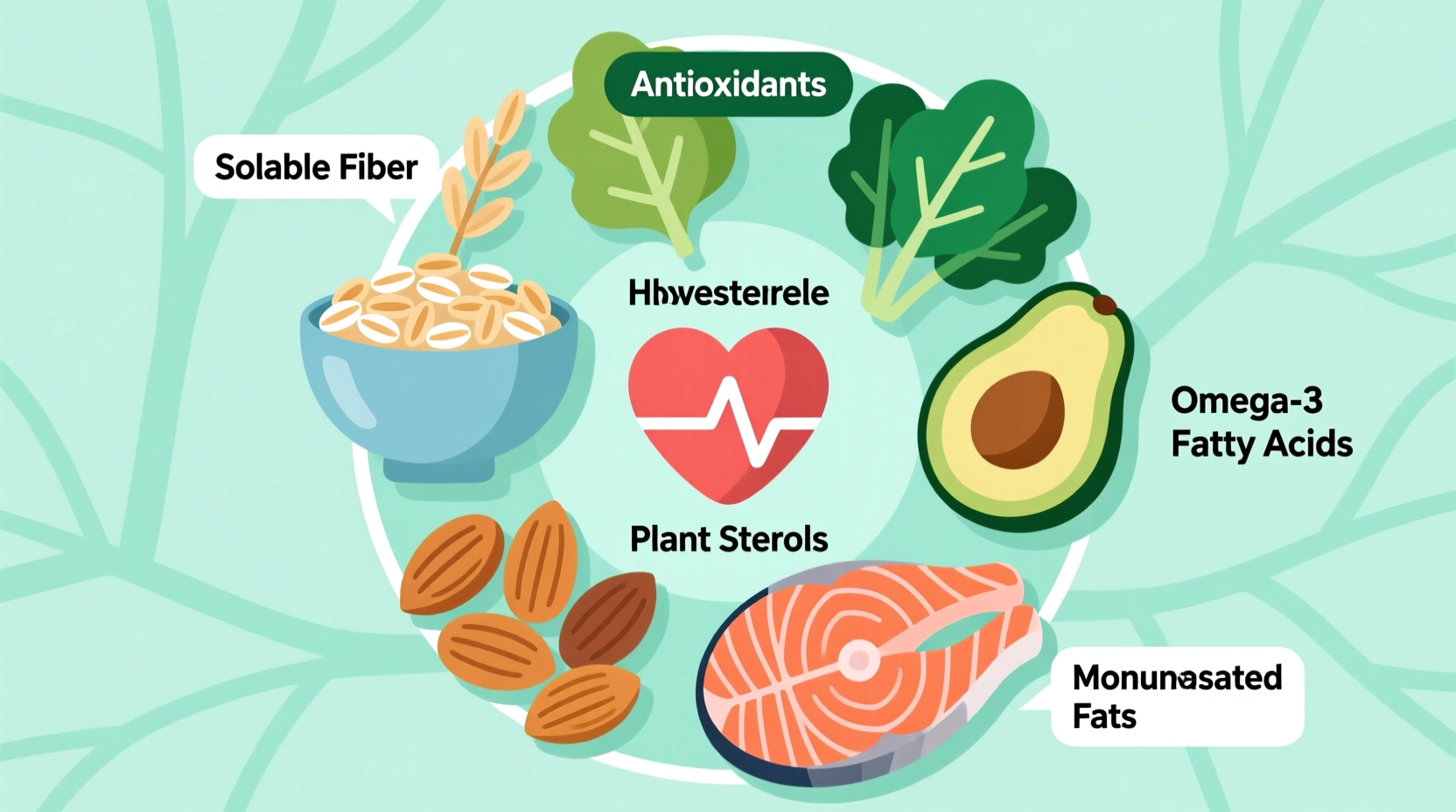High cholesterol affects nearly 94 million American adults, increasing heart disease risk. The good news? You don't need medication to make meaningful improvements. Incorporating specific cholesterol-lowering foods into your daily routine can significantly reduce LDL levels while improving overall heart health. Let's explore the science-backed dietary changes that deliver real results.
Your Cholesterol-Lowering Food Action Plan
Instead of overwhelming yourself with drastic changes, focus on these evidence-based food additions that work together to reduce cholesterol naturally. These aren't fad diets or miracle cures—they're practical, sustainable choices backed by decades of research.
Immediate Impact Foods: What to Add Today
Start with these powerhouse foods that deliver measurable cholesterol reduction when consumed consistently:
- Oats and barley: Just 1.5 cups of cooked oats daily provides 2g of beta-glucan soluble fiber, which binds to cholesterol in your digestive tract. The FDA recognizes that 3g of oat beta-glucan daily can lower LDL by 5-8%.
- Fatty fish: Salmon, mackerel, and herring contain omega-3 fatty acids that reduce triglycerides and inflammation. Aim for two 3.5-ounce servings weekly for optimal heart benefits.
- Nuts: Walnuts and almonds (1.5 ounces daily) contain plant sterols and healthy fats that lower LDL by 5-10% according to Mayo Clinic research.
- Beans and legumes: Black beans, kidney beans, and lentils provide 4-8g of soluble fiber per serving. Adding just ½ cup daily can reduce LDL by 5% in 6 weeks.
| Cholesterol-Lowering Food | Daily Amount for Benefit | LDL Reduction Potential | Key Active Component |
|---|---|---|---|
| Oats/Barley | 1.5 cups cooked | 5-8% | Beta-glucan fiber |
| Walnuts | 1.5 ounces (14 halves) | 5-10% | Plant sterols, omega-3s |
| Fatty Fish | 2 servings/week | 4-6% (triglycerides) | Omega-3 fatty acids |
| Beans/Lentils | ½ cup daily | 5% | Soluble fiber |
| Olive Oil | 2 tablespoons daily | 4-6% | Monounsaturated fats |
How These Foods Actually Work: The Science Simplified
Understanding the mechanism helps you maximize results. Soluble fiber forms a gel-like substance in your gut that binds to cholesterol particles, preventing their absorption into your bloodstream. Instead, they're eliminated from your body.
Healthy fats like those in olive oil and avocados replace saturated fats in your diet while improving your cholesterol profile. Plant sterols (found in nuts and fortified foods) have a similar structure to cholesterol, allowing them to compete for absorption in your digestive system.

Putting It Into Practice: Your Daily Implementation Strategy
Here's how to incorporate these foods into your routine without feeling overwhelmed:
- Breakfast boost: Start with oatmeal topped with walnuts and berries instead of sugary cereals. This single change provides 4g of soluble fiber and 2g of plant sterols.
- Lunch transformation: Replace processed meats with bean-based soups or lentil salads. A cup of lentil soup delivers 8g of cholesterol-fighting fiber.
- Smart swaps: Use olive oil instead of butter for cooking, and avocado instead of mayo on sandwiches.
- Strategic snacking: Keep a small container of almonds (about 23 nuts) for between-meal hunger.
Important Considerations: When Food Alone Isn't Enough
While dietary changes deliver significant benefits, understand these important context boundaries:
- Timeframe matters: Most people see cholesterol improvements within 4-12 weeks of consistent dietary changes, according to NIH studies. Don't expect overnight results.
- Individual variation: Genetics play a role—some people (about 25%) are more responsive to dietary changes than others.
- Comprehensive approach: Food works best when combined with regular exercise (150 minutes weekly) and maintaining a healthy weight.
- Medical considerations: If you have very high cholesterol (LDL >190) or existing heart disease, medication may be necessary alongside dietary changes.
Avoid These Common Mistakes
Even with the right foods, these pitfalls can undermine your efforts:
- Overdoing healthy fats: While nuts and olive oil are beneficial, they're calorie-dense. Stick to recommended portions.
- Hidden saturated fats: Many processed "healthy" foods contain palm oil or coconut oil, which can raise cholesterol.
- Ignoring overall diet pattern: Adding cholesterol-lowering foods while still consuming lots of processed foods and sugars limits results.
- Expecting immediate results: Cholesterol changes take consistent effort over weeks, not days.
Your Realistic Expectations Timeline
Understanding the progression helps maintain motivation:
- Weeks 1-2: Establish new eating habits; no cholesterol changes yet
- Weeks 3-6: Early improvements may appear; most people see 3-5% LDL reduction
- Weeks 7-12: Maximum dietary impact typically achieved (5-15% LDL reduction)
- After 12 weeks: Maintain changes for continued benefits; consider retesting cholesterol
Remember that food is just one component of cholesterol management. Pair these dietary changes with regular physical activity and stress management for optimal heart health. Consult with your healthcare provider before making significant dietary changes, especially if you're taking cholesterol medication.











 浙公网安备
33010002000092号
浙公网安备
33010002000092号 浙B2-20120091-4
浙B2-20120091-4